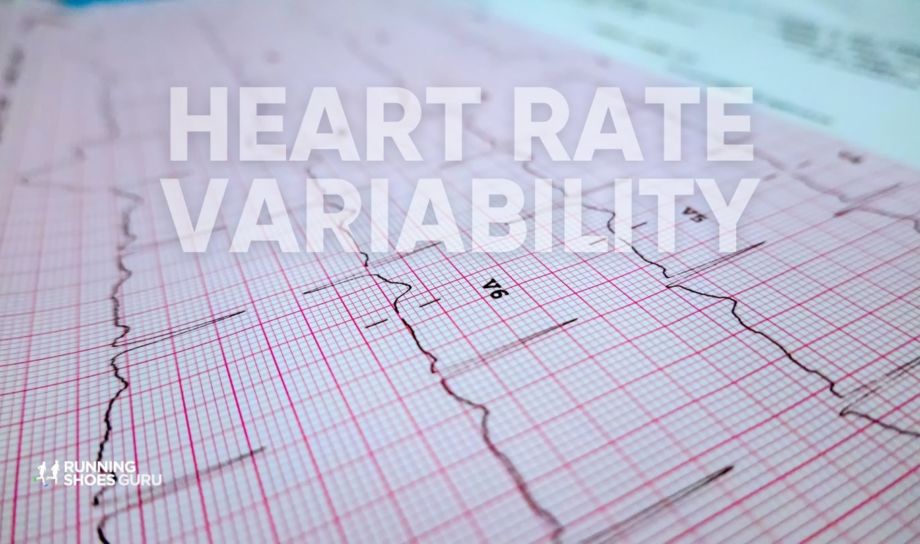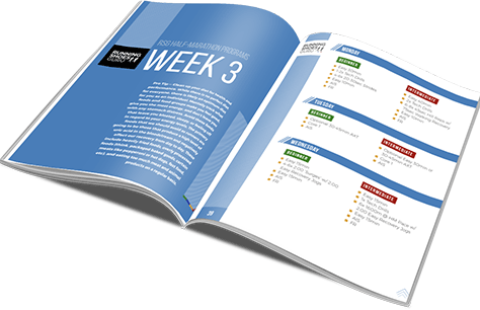Heart Rate Variability – Everything You Need to Know as a Runner.


Heart Rate Variability (HRV) is a seriously handy tool to understand your body and show how well (or not so well) it is responding to training load, stress, or just everyday antics. Imagine that each morning you wake up, your body could tell you exactly how it feels… enter Heart Rate Variability.
From a simple Heart Rate Variability score measured on almost every fitness watch or tracker these days, you can see exactly how your body is feeling – it’s often surprising too because I’ve woken up feeling drained and reluctant to train. but actually, my body was ready to roll. I forced the run and ended up with an epically fast session I didn’t think was possible.
See?! This health measure really can impact how you tackle training, and how much rest you need to take and offer a snapshot of what your health could look like long term. Let’s dig a little deeper…

By YitzhakNat – Own work + ECG wave from, CC BY-SA 4.0, https://commons.wikimedia.org/w/index.php?curid=121207798
In a nutshell, HRV measures the fluctuations in between each heartbeat. The beat-to-beat interval is measured in milliseconds which can and will vary all the time. Unbeknown to most, a healthy heart does not keep a metronymic, regular rhythm because of how our body works and changes with even the tiniest of factors. For example, the beat-to-beat intervals will be shorter when you inhale, and longer when you exhale.
So, while you might have a 60 Beats Per Minute (BPM) Resting Heart Rate – that doesn’t mean there’s a heartbeat every second. Because the speed of each heartbeat fluctuates all the time. Within the same minute, you could have a 0.8-second beat-to-beat interval while inhaling followed by a 1.3-second between another interval on the exhale.
Does this mean that it’s incredibly hard to measure and understand? No not at all. Each millisecond can tell you a heck of a lot about your body that is extremely important to understanding your overall health and wellness – from understanding how well you recovered throughout the night right through to significant heart conditions.
There are tons of factors that will influence your HRV, such as:
You might be surprised to know that HRV is highly related to your nervous system, both the parasympathetic and sympathetic nervous systems which react to external factors like exercise loads and most importantly, stress.
Both the sympathetic and parasympathetic nervous systems send signals to your heart causing it to fluctuate, so it’s no accident that HRV scores can indicate the presence or risk of stress or heart-related health conditions.
We know your heart rate changes throughout the day – if you’ve got a Garmin training watch it’s likely you can see the hourly breakdown of stress measured concerning your heart rate. So, you might find that your stress (and heart rate) peaks when you’re boss email you to request a meeting and drops after your evening run.
For your heart rate to change like this almost instantly, it relies on the messages sent from your Autonomic nervous system – the sympathetic and parasympathetic systems.
Sympathetic nervous system is responsible for your ‘fight, flight’ response – its job is to save your life when under a perceived significant threat (like a bear in the woods or that email from your boss). While the Parasympathetic nervous system is in charge of the ‘rest and digest’ response. It kicks in when you feel safe and lets you relax, digest food and sleep.
So by understanding your HRV score, you can see how your nervous system is working. A high HRV score signals that your ‘rest and digest’ response is functioning well. Whereas a low HRV score can highlight that your ‘fight or flight’ response is activated.
In exercise terms, your sympathetic nervous system is in charge whilst on the run, whether or not a bear is chasing you. Its stimulus makes the heart beat faster to get blood and oxygen pumping around the body. After training, your Parasympathetic nervous system kicks in and helps you with rest and recovery.

The gold standard way to measure your HRV is via an ECG because it provides a direct reflection of your heart’s electrical activity. But honestly, a heart rate chest strap monitor will suffice, it often provides a much more accurate than any wrist device.
But most modern fitness or training watches will offer HRV readings as a feature:
This list is not exhaustive, but it’s a good starting point.
Wearing either a wristwatch or chest strap whilst sleeping or performing a Polar Orthostatic test will give you a score. Whatever your wearable from the list above, in-app measurements will provide your HRV score and its day-to-day fluctuations, with charts and exercise/rest suggestions.
The best time to measure HRV is during sleep but the Polar H10 heart rate strap and a four-minute Orthostatic test are taken when you wake up whilst laying and standing.
I guess now you want to know what a ‘normal’ score looks like when it comes to HRV. However, this isn’t a metric that you can compare… it’s inherently personal to you and your biological makeup. As corny as it sounds, you are the only person you can compete with or measure against. Cool eh?
That being said, physical factors beyond our control will influence your HRV scores, such as:
All in all, it’s not productive at all to get caught up in charts and figures against the ‘norm’. Instead, what your HRV will show you is how adaptable your body is or can be.
A higher score can indicate a fit and healthy body that can handle change. But don’t get caught up choosing high scores, because a lower HRV can be beneficial too, especially when during strenuous exercise.
The more relaxed you are, the longer the beat-to-beat intervals are (in milliseconds) and thus the higher variation occurs between each heartbeat, hence the higher score. Make sense?
High HRV is often a sign of:
Low HRV is often a sign of:

Okay so you’ve had a couple of nights’ HRV results and now you want to improve your scores… to do this you will have to take your whole well-being into consideration that’s both mental and physical health.
We’ve learned how your nervous system reacts to thoughts, feelings and general emotional state (anxiety, stress, depression = low score) for example, and is just as important as your sleep, fitness and everyday environment.
Taking care of your mental well-being really can improve your HRV, especially stress! I really got into the metrics when I realised how my excessively stressful work environment was causing serious health and HRV decline. The moment I dealt with it, my HRV score almost tripled. The proof really is in the pudding here.
I created a better, less stressful working environment and used tools and techniques to ease my anxiety levels such as meditations, tech-free walks with the dog, and believe it or not – running more!!
By truly unpacking your score day-to-day, putting your life and habits under the microscope can give you all the information you need to live a better, healthier lifestyle. It could be to take more rest from training, it could be finding a new job or going to therapy and then there are more physical ways to help boost your HRV score.
Caring for your heart is important! Regular exercise (you don’t need a PB each time you run, a Heart rate zone 1-2 trot is more than sufficient), alongside eating a well-balanced, nutritional diet and getting enough, good quality sleep.
Make changes in these areas, not only will your health, fitness and wellbeing improve, but so will your HRV!








